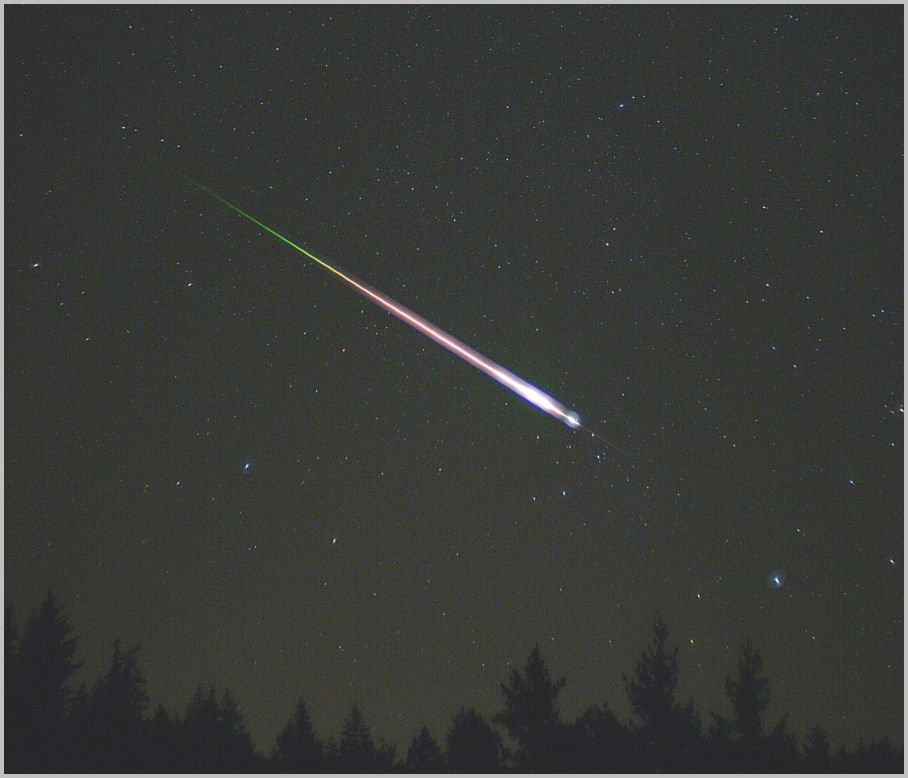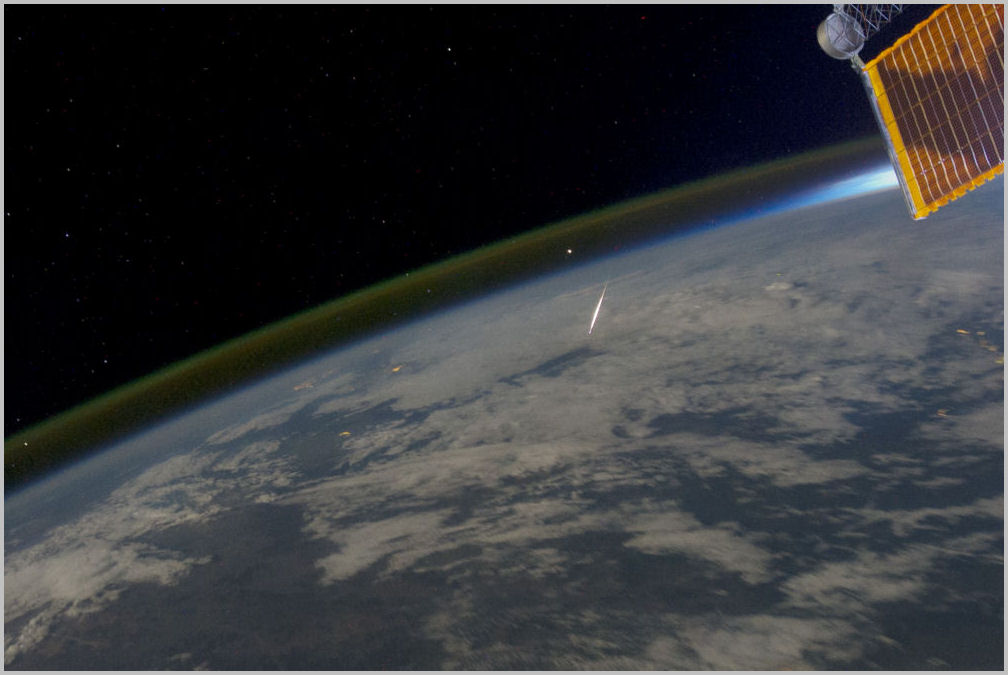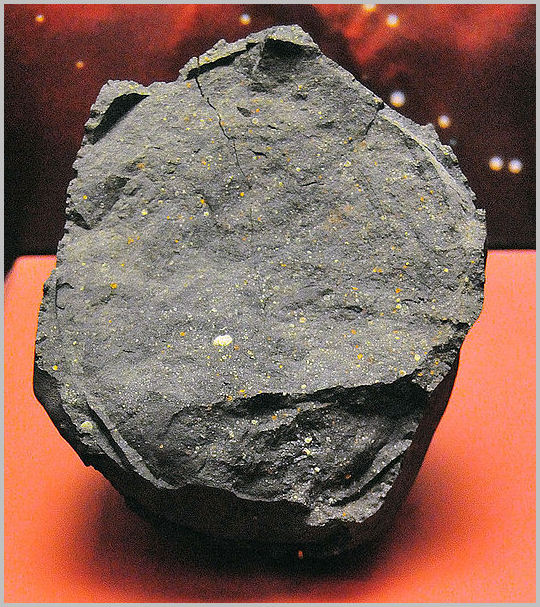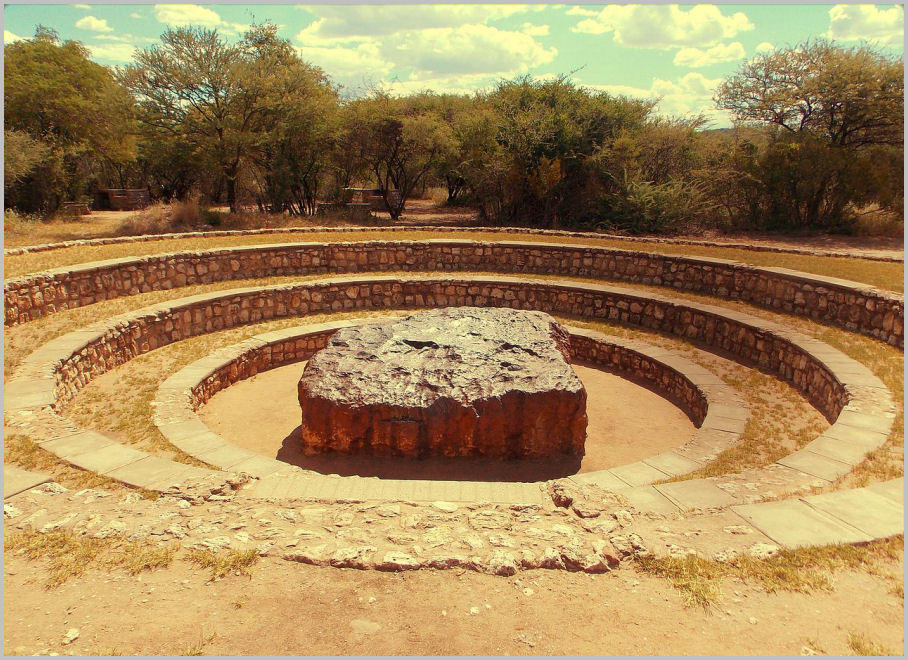| HOME |
|---|


Leonid Meteor - Navicore - November, 2009
| HOME |
|---|


A meteor can be anything from a grain of dust to a piece of man-made space junk. The official definition of the International Astronomical Union is: "a solid object... considerably smaller than an asteroid, and considerably larger than an atom or molecule," although in many modern circles anything that falls to Earth from space is often referred to as a meteor, regardless of its size.
Below is a photo from the International Space Station, showing us what a meteor looks like from space.

Small meteors are consumed in the fire of atmospheric friction long before they reach the ground, their annihilation producing a spectacular streak of light across the sky, known as a shooting star. If a meteor is large enough, one or more pieces of it may survive the fireball, and reach the ground as a meteorite. Occasionally, these fragments are found and identified. The meteorite pictured below landed near Murchison, Australia, September 28, 1969.

86% are Chondrites (stony material containing melted particles)
8% are Achondrites (stony material containing no particles)
5% are Iron Meteorites (iron from the core of a larger body)
1% are Stony Iron Meteorites (stony material mixed with iron)
Below is the largest meteorite ever found, the Hoba Meteorite, discovered in Namibia, Africa. It is an iron meteorite, and weighs over 60 tons. It is the largest natural piece of iron on the surface of the planet. Because of its weight, it was left right where it was found, and declared a national monument by the Namibian government. It is estimated to have fallen to Earth about 80,000 years ago. Why this large piece of iron fell to Earth intact and left no apparent impact crater is a subject of much speculation.

The best time to observe shooting stars is when Earth passes through the debris field of a comet. As comets near the sun, a portion of their icy bodies vaporize, giving rise to their distinctive tail, and leaving behind a debris field of dust and dirt. If the comet passed close enough to Earth's orbit, then once a year, when Earth passes through this debris, we can experience a plethora of shooting stars, called a meteor shower. In one complete orbit around the sun, Earth passes through no less than 110 of these debris fields, although most of them produce limited displays. The major, most impressive meteor showers are listed below. The dates are the times of maximum activity, although meteors may be seen for a few days surrounding those dates. The names of the meteor showers are derived from the constellation where the meteors appear to originate, called the radiant.
|
|
The thrilling spectacle of a bright shooting star is testament to how our atmosphere here on Earth protects us from the bulk of the cosmic debris that rains down on us every day. Other bodies in our solar system aren't so lucky, enduring a constant peppering from space that scars and pockmarks their unprotected surface. None show these effects more than our heavily cratered companion, the Moon...
|
|
|
| SOL | MERCURY | VENUS | EARTH | METEORS | MOON | MARS | ASTEROIDS | JUPITER | SATURN | URANUS | NEPTUNE | PLUTO | COMETS |
|
|
|